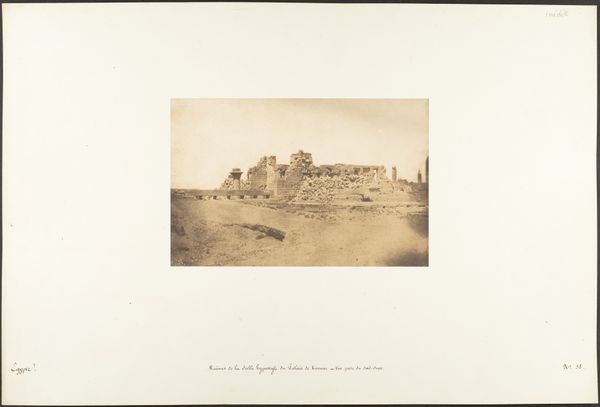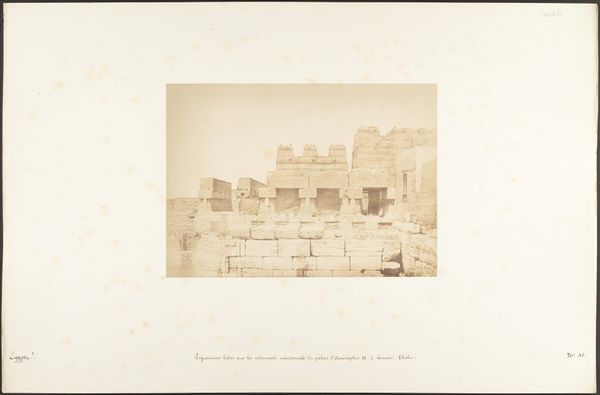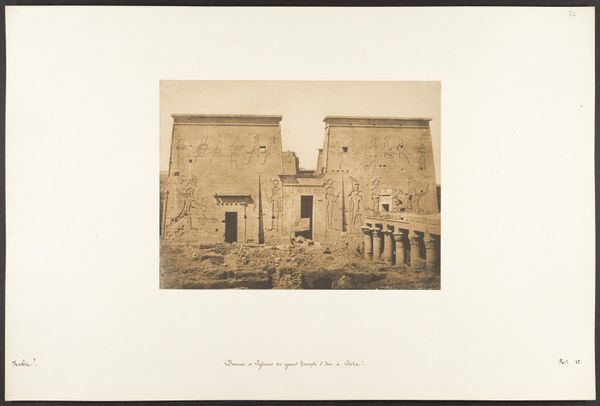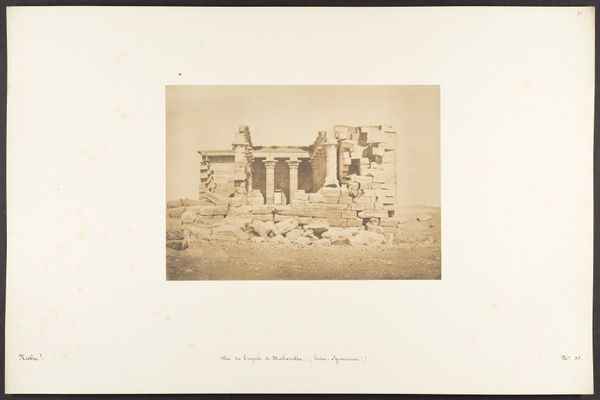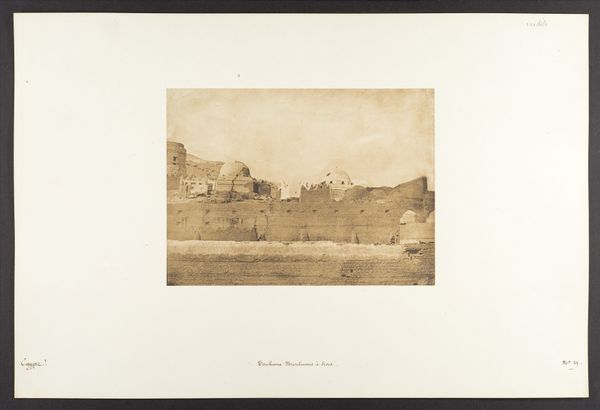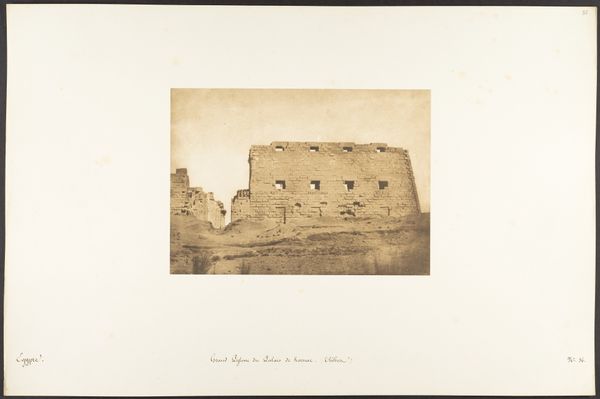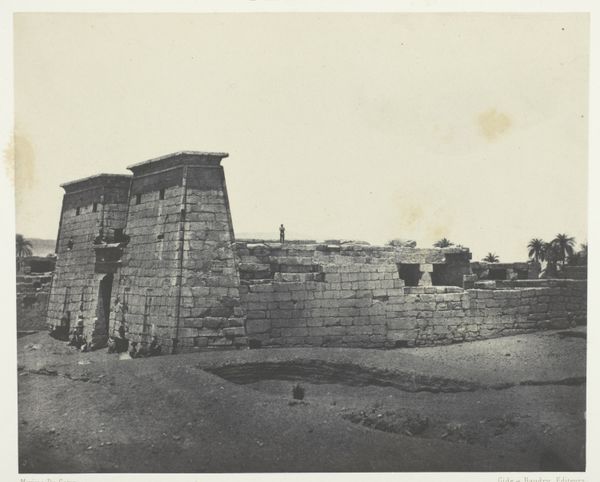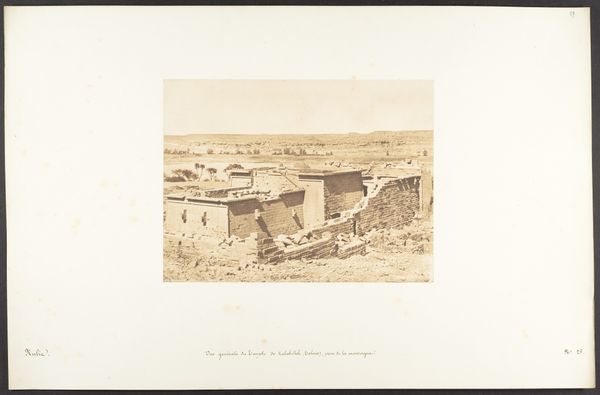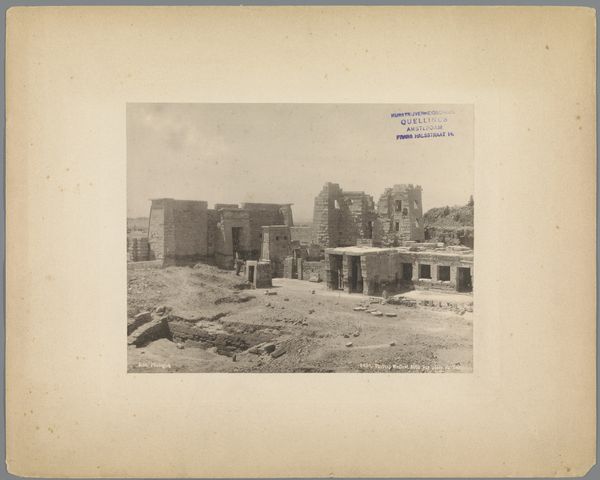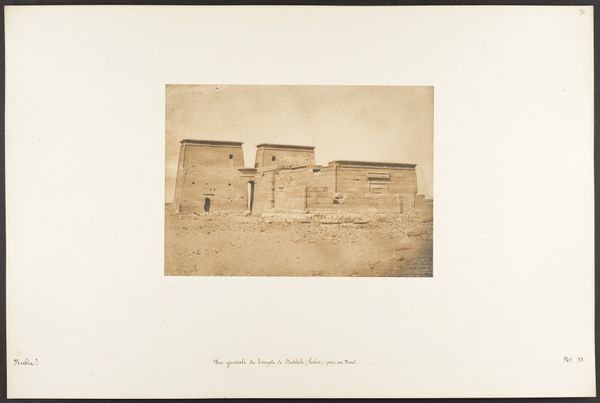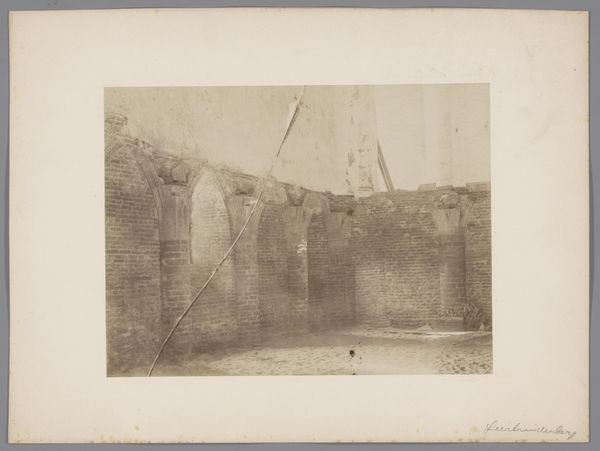
Vue générale du Temple de Khons, à Karnac, Thèbes 1849 - 1850
0:00
0:00
photography, albumen-print, architecture
#
landscape
#
ancient-egyptian-art
#
photography
#
orientalism
#
albumen-print
#
architecture
#
realism
Dimensions: Image: 6 5/16 × 8 1/4 in. (16 × 21 cm) Mount: 12 5/16 × 18 11/16 in. (31.2 × 47.5 cm)
Copyright: Public Domain
Curator: Immediately, I sense immense power—a silent, enduring presence rising from the earth. It's monumental. Editor: This is Maxime Du Camp’s “General View of the Temple of Khons, at Karnak, Thebes,” an albumen print from 1849-1850. These early photographs helped shape Western perceptions of ancient Egypt. It’s held in the collection of the Metropolitan Museum of Art. Curator: The image conveys such stillness. The quality of the light seems to flatten the immense structure almost, evoking a sense of the timeless. It reminds me that temples such as this held far more than mere religious significance. They embodied complex mythologies, ritual practices, and social structures of dynastic Egypt. Editor: Precisely. Du Camp’s work, while celebrated for its documentary value, also participates in Orientalist tropes. The absence of a dynamic human presence around such a colossal building emphasizes the 'Otherness' of a culture made to seem both magnificent and static. What do you feel the use of photography contributes? Curator: The choice of photography lends an almost unsettling credibility. There's something about seeing the eroded surfaces, the stark lines of architecture, preserved with what feels like objective fidelity, which intensifies my impression. But you're right; a lens always carries a certain cultural bias. Editor: The image seems purposefully stripped of narrative context, removing any indication of the social upheaval of the time period. The presence of a person could provide a modern understanding of place, for sure, however the emptiness amplifies that sense of distant mystery Western audiences often projected onto Egypt, conveniently ignoring contemporary realities and socio-political complexities. Curator: But the emptiness in itself becomes a powerful symbol, representing time’s passage. Despite that perceived void, what remains standing communicates its prior grandeur—its symbolic permanence over millennia of changing beliefs and societal disruptions. Perhaps there's truth in reading silence as testament to time’s enduring power here. Editor: Maybe both views can coexist, the sense of wonderment intertwined with the awareness of skewed perspectives. Du Camp provides this access point; we have to acknowledge our contemporary responsibility to approach the image and all similar archival work, equipped with contextual knowledge to truly comprehend their weight in historical cultural dynamics. Curator: It allows one to glimpse an understanding of how symbols can outlive empires—standing alone to quietly represent stories of cultures we should seek to comprehend in both image and intention. Editor: Yes, there is a tension captured here—a historical power dynamic that also holds within it potential to dismantle false constructs when paired with ethical reflection and contextual learning.
Comments
No comments
Be the first to comment and join the conversation on the ultimate creative platform.
